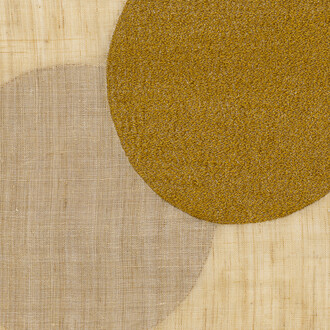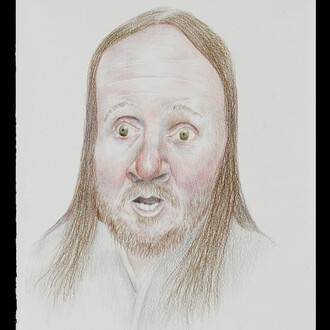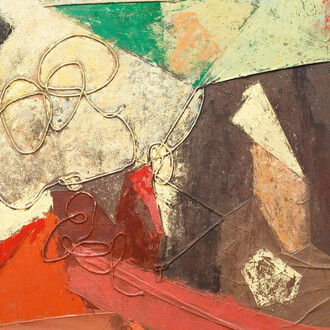A form of smoothly troweled, unfinished concrete occupies most of the room. It is compressed between ceiling and floor, swelling out around its middle.
My sculpture is centered on a continuous search for new forms. Since the work is not derived from images, but is rather an evolution of abstract forms which trigger associations with nature, I am always interested to find confirmation of my point of view in man-made and naturally formed objects.
Stone age tools, ceremonial objects, and idols fascinate me and are among the source of materials for my work. The content of my work is not so much nature abstracted, but a form which is evolved in relation to nature and which carries with it natural associations.
Because of this, my work makes use of natural materials, as they point the way towards the evolving form and provide a resistance which generates tension. I continue to use man-made materials such as concrete and iron because they make it possible to develop new forms quickly, while retaining the feel of a natural material.
I use a series of irregular curves to make up the form of my fabricated sculptures. Since the form is made up of these curves, the sculptures seem to resemble forms found in nature: i.e. form one point of view the work may look like a natural rockform, from another an overgrown vegetable, and from another a surfacing whale. The images shift as the viewers change their point of view. I usually try and make sculptures that maximize these associations, although sometimes it is more powerful to limit them. But these are abstract works, they are not reductions from natural forms.
(Jene Highstein)
Jene Highstein was born in Baltimore, MD. He attended the University of Chicago and subsequently the Royal Academy Schools in London and the New York Studio School, earning degrees in philosophy and art. "An artist best known for refined post-Minimalist sculptures...He favored monumental forms and was adept in a wide range of mediums, incluidng stone, metal, wood, glass, concrete and resin. His work is related to Minimalism but is distinctive in its sensuousness and its use of curving lines and organic shapes inspired by nature.
















